In this excerpt from my book, Write Your Novel Step by Step, I outline the four stages of writing a novel that confront every author.
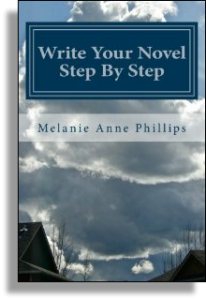 Step 1 – Stages of Writing a Novel
Step 1 – Stages of Writing a Novel
Writers often begin the novel development process by thinking about what their story needs: a main character/protagonist/hero, a solid theme, a riveting plot and, of course, to meet all the touch points of their genre.
Because this is just the beginning of the process, they usually don’t have much of that worked out yet. And so, they are faced with the daunting task of figuring out their story’s world, who’s in it, what happens to them, and what it all means before they even write a word. This can throw a writer into creative gridlock right out of the gate and can get so frustrating that the Muse completely desserts them.
Fortunately, there’s a better way. Rather than asking what the story needs, we can turn it around and ask what the author needs. What is the most comfortable sequence of activities that will lead a writer from concept to completion of their novel or screenplay?
As varied a lot as we writers are, there are certain fundamental phases we all go through when coming to our stories. In fact, we can arrange the entire creative process into four distinct stages:
1. Inspiration
2. Development
3. Exposition
4. Storytelling
The Inspiration Stage begins the moment we have an idea for a story. This might be an overall concept (computer geeks are transported to the old west), a plot twist (a detective discovers he is investigating his own murder), a character situation (Ponce de Leon still lives today), a thematic topic (fracking), a character study (an aging rock star who is losing his licks) a line of dialog (“Just cuz somthin’s free don’t mean you didn’t buy it.”), a title (Too Old To Die Young) or any other creative notion that makes you think, that’s a good idea for a story!
What gets the hair on your writerly tail to stand up isn’t important. Whatever it is, you are in the Inspiration Stage and it lasts as long as the ideas flow like spring runoff. You might add characters, specific events in your plot or even write a chapter or two. A very lucky writer never gets out of this stage and just keeps on going until the novel is completely written and sent out for publication.
Alas, for most of us, the Muse vanishes somewhere along the line, and we find ourselves staring at the all-
In the Development Stage we stand back and take a long critical look at our story. There are likely sections that are ready to write, or perhaps you’ve already written some. Then there are the holes, both small and gaping, where there’s a disconnect from one moment you’ve worked out to the next one, bridging over what you can intuitively feel are several skipped beats along the way. There are also breaks in logic when what happens at the beginning makes no sense in connection to what happens at the end (like the Golden Spike if the tracks were a mile apart). There are characters that don’t ring true, unresolved conflicts, and expressed emotions that seem to come out of nowhere. You may find thematic inconsistency or may even be missing a theme altogether.
And so, the work begins – tackling each and every one of these by itself, even while trying to make them all fit together. By the end of the development stage, you’ll have added detail and richness to your story and gotten all the parts to work in concert like a well-
Eventually (thank providence) you’ll have all the leaks plugged and a fresh coat of paint on the thing. You now know your story inside and out. But, your readers won’t. In fact, you realize that while you can see your beginning, ending and all that happens in between in a single glance, all at once, your readers or audience will be introduced to the elements of your story in a winding sequential progression of reveals. You also realize you have quite unawares stumbled into Stage Three: Exposition.
You know your story, but how do you unfold it for others? Where do you begin? Do you use flash backs or perhaps flash forwards? Do you mislead them? Do you keep a mystery? Do you spell things out all at once, or do you drop clues along the way?
There are endless techniques for revealing the totality of your story, many can be used simultaneously, and each one adds a different spice to the journey. Like a parade, every float and band has a position designed to create the greatest impact. And when you have all that figured out, you are ready to write as you begin the Storytelling Stage.
Storytelling is all about word play and style. Whether you are writing a novel, a screenplay or a stage play, there are media-
Before we send it out the door, we writers shift and substitute and polish until (almost regretfully) we let it go, just like a parent bundling up a child for school. In the end, as Da Vinci’s famous saying goes, “Art is never finished, only abandoned.”
So, Inspiration, Development, Exposition and Storytelling are the four stages of story development that nearly every writer travels through on the way from concept to completion.

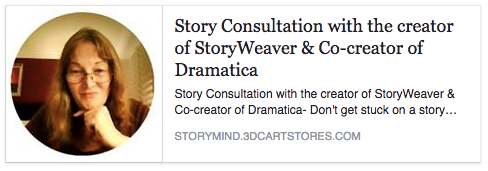
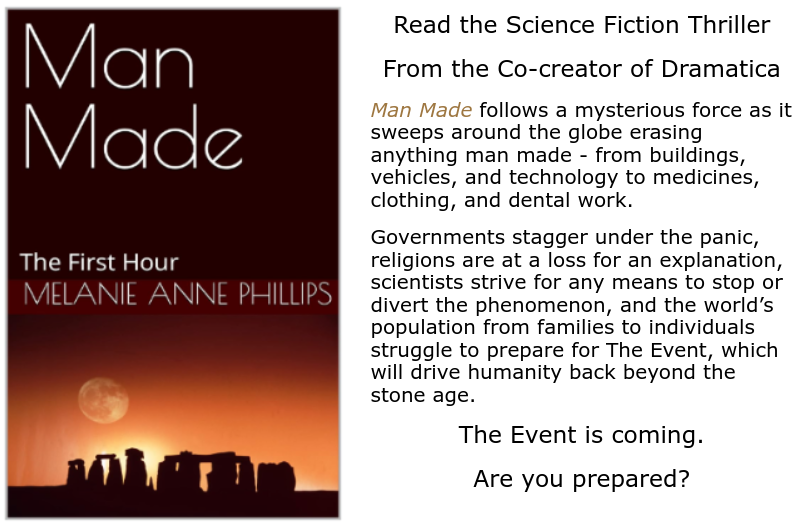
 Trick 8
Trick 8

 Trick 7
Trick 7
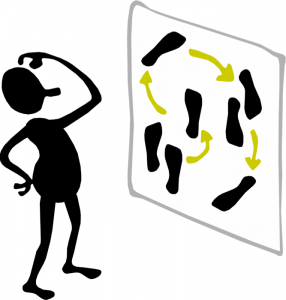 The achievement of (or failure to achieve) the goal is an important but short moment at the end of a story. So how is interest maintained over the course of the story? By the progress of the quest toward the goal. This progress is measured by how many of the requirements have been met and how many remain.
The achievement of (or failure to achieve) the goal is an important but short moment at the end of a story. So how is interest maintained over the course of the story? By the progress of the quest toward the goal. This progress is measured by how many of the requirements have been met and how many remain.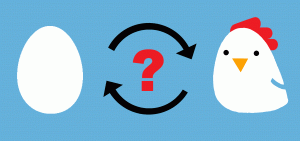
You must be logged in to post a comment.